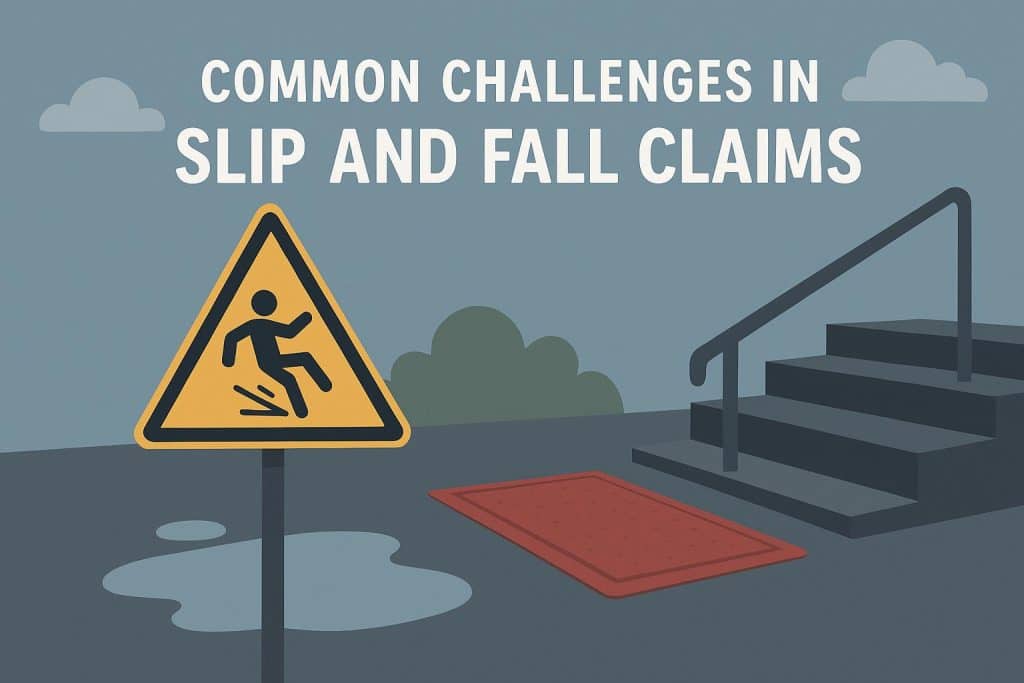Personal injury cases can be overwhelming, especially when they result from a sudden incident, such as a slip and fall. People may face physical pain, medical expenses, and the stress of proving what happened. Chicago’s busy sidewalks, stores, and public buildings see constant foot traffic, which increases the chances of hazards going unnoticed. Yet, showing that a property owner failed to address a dangerous condition isn’t always straightforward.
These cases often require clear evidence, meticulous documentation, and an understanding of how local laws operate. A Chicago slip and fall lawyer can be a valuable source of guidance during this process, helping individuals understand their rights and the steps involved in pursuing compensation. Understanding common obstacles can help those affected prepare more confidently.
Establishing Liability
Demonstrating liability, however, is often one of the biggest roadblocks in slip and fall cases. One thing all property owners must do is keep their property safe. But proving that the owner neglected this responsibility can often be difficult. In addition, a claimant has to prove that the hazard caused their injury, and that the owner created the circumstances for it or failed to remedy it within a reasonable period.
Proving Notice
The second most common issue has to do with whether the property owner was aware of the hazardous condition. Evidence of actual or constructive notice is often required by courts. Actual notice means the owner had direct knowledge of the danger. Constructive notice is when the danger was there long enough that the owner should have discovered it through proper precautions. Proving either scenario can be a challenge.
Comparative Fault
Slip and fall claims may become more complex if the injured party holds some responsibility. Comparative fault rules allow for shared blame. If the claimant contributed to the accident through careless behavior, any compensation awarded may be reduced. For example, not paying attention while walking or ignoring warning signs can affect the outcome.
Insufficient Evidence
Evidence is central to successful slip and fall claims. Support comes in the form of photographs, eyewitness accounts, and medical records. But in the aftermath of an incident, evidence can disappear quickly. This makes it significantly harder for victims to build a convincing case for receiving compensation from the responsible party without adequate documentation.
Pre-Existing Conditions
Most of the time, anyone investigating an injury claim will not only examine the incident but also the health history of the claimant. Often, the insurance companies say the symptoms were pre-existing due to prior injuries or medical problems, rather than resulting from the fall. It’s important for claimants to separate past conditions from new conditions arising from the accident. Similarly, medical records and expert opinions provide insight into how the fall negatively impacted the lives of the claimants.
Delays in Seeking Medical Care
Getting medical care promptly strengthens a slip and fall case. If there is a delay between the fall and when a doctor is seen, this can raise questions about whether the injury was caused by the fall. Insurance adjusters often claim that a delay in seeking treatment means the injury was minor or that it could not be related. A prompt medical visit and clear treatment notes can help support the severity of the injury.
Inconsistent Statements
The claims process requires consistency in communication. Variation in the statements provided to property owners, medical professionals, or insurance representatives can weaken credibility. Insurance companies are constantly seeking out conflicting accounts that will enable them to dispute your claim. Lawyers cull facts and information that are precise and uniform to achieve a successful result.
Witness Availability
Eyewitnesses play an important role in proving what actually happened. However, it may not always be possible to find an unbiased witness. From time to time, nobody witnessed the incident differently. At other times, witnesses might be present and unwilling or unable to provide a statement. Proving who was at fault can be harder without independent accounts.
Insurance Company Tactics
Insurance adjusters will often downplay injuries, fault, or pay settlements not justified for the extent of the harm caused. They frequently use stall tactics or strong-arm claimants into accepting less than what they are reasonably entitled to. These strategies, and the understanding that comes with them, benefit claimants who need nothing less than to stand their ground.
Legal Deadlines
There is a statute of limitations for every slip and fall claim, which limits the time within which the claim can be filed. Failing to meet this deadline generally results in losing the right to pursue damages. These time limits exist in all regions, and complainants should ensure that they act promptly to preserve their rights.
Conclusion
There are several hurdles to overcome when pursuing compensation after a slip and fall accident, including establishing liability and meeting filing deadlines. Knowing these typical frustrations helps claimants maximize their chances of a reasonable and effective recovery. Slipping and falling cases are more manageable with an approach that prioritizes patient details, valid information, and timely responses, which enables victims to seek justice with greater assertiveness.
